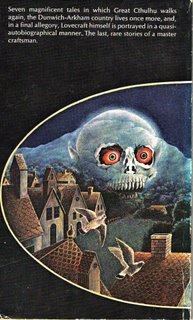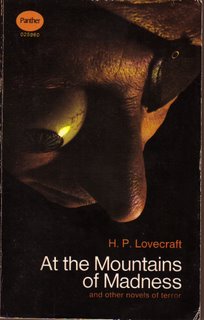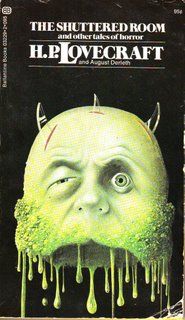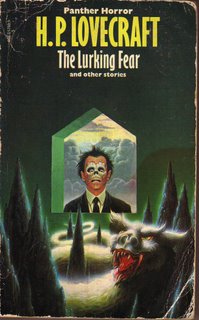Finished Buruma & Margalit's 'Occidentalism' in the train today - a good (not brilliant), New York Review of Books-style journalistic account of the western origins of anti-western thought, and the influence of this thought on radical political islamism.
The book reminded that many (especially Scandinavian and Eastern European) Black Metal bands espouse a strong anti-western worldview; a worldview which springs from the same politically poisoned well of romaticism as Osama Bin Laden's.
Thus, it made me wonder if the impossible genre of Islamist Black Metal could have sprung into existence, if only many radical Islamists had not believed the Qu'ran prohibits music. Bin Laden Burzum!
Monday, October 30, 2006
Saturday, October 28, 2006
Polar bear capital of the world
Comparing my clustermap (at the bottom of this page) to my atlas, I saw that someone from Churchill, from Manitoba in Canada, has read my blog - someone who lives north of the pole circle, in a town which calls itself "Polar bear capital of the world". Isn't blogging great?
Spektr - Near Death Experience
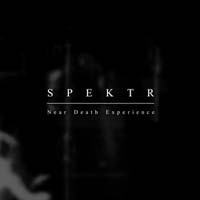 A few posts ago, in a review of Xasthur's 'Subliminal Genocide', I called out for some "Striborg meets Stockhausen" music. Sometimes, such calls are answered: the sound of French Black Metal band Spektrs cd "Near Death Experience" roared back at my call, out of the dark abyss.
A few posts ago, in a review of Xasthur's 'Subliminal Genocide', I called out for some "Striborg meets Stockhausen" music. Sometimes, such calls are answered: the sound of French Black Metal band Spektrs cd "Near Death Experience" roared back at my call, out of the dark abyss.The French Black Metal scene is a very active one: bands Blut aus Nord, Haemoth, Deathspell Omega, Mütiilation and their ilk have spilled a blot of the blackest ink on the map of Europe, centered on Paris.
One of the salient features of many French Black metal bands is their comparatively intellectual orientation: where most black metal bands share metal's general anti-intellectualism, French black metal bands casually inject quotes of Georges Bataille into their interviews, and use obscure philosophical, occult and theological terms in their communications. Of course, the French have a reputation to keep up: 'Les Fleurs Du Mal', Baudelaire's towering floral hymn to Satan, still casts a shadow over these modern acolytes of the Dark One - not to speak of Baudelaire's progeny, from Lautreamont and Gérard de Nerval to Artaud and Bataille.
Another salient feature of French Black Metal is it's orthodox satanism. With regards to Satanism it is interesting to see that recently Satanist Black Metal has started to use the language of fundamentalism. For example, from the website of Swedish Black Metal band Ondskapt: "To worship him is to obey a holy will, immortal in its very fundaments. Ondskapt make no compromise when it comes to religiousness. Our music is completely dependant on the beliefs of the band. The music and lyrics exist solely through our faith and NEVER vice versa!". Many Black Metal bands have started to call themselves 'Orthodox', a term that generally refers to conservative dogmatism and is often used for those strains of Islam that are connected to fundamentalist violence. Of course, that one of the most heretic and apostatic musical genres has started to call itself 'orthodox' is deeply ironic. Without doubt, this fundamentalist language is used because since it has become transgressive to use it, as fundamentalist religion has become identified with terrorism, violence and evil; and Black Metal absorbs everything that is transgressive into it's culture. Thus, the consequences of Osama Bin Laden's actions have reached even as far as Black Metal; and it might be said that the western romantic nihilism that has influenced the Al-Qaeda ideology (see Buruma & Margalits 'Occidentalism') has come full circle. Perhaps, if more terrorist attacks occur in the coming years and the identification of fundamentalism and evil grows stronger, the language of satanic religious orthodoxy will eclipse the language of fascism in black metal.
Yesterday I bought French Black metal band Spektr's cd 'Near Death Experience', their second release.
It is not in itself the guitar playing or the vocals that make 'Near Death Experience' one of the most interesting recent albums in the Black metal genre: though somewhat slower, these resemble that of Haemoth on the Kontamination cd: cold, tinny, brittle yet fierce, harsh, trancelike (in fact, Haemoth is supposedly part of this band and in any case responsible for the vague but macabre black and white artwork of the Spektr cd cover).
And it is not in itself the fact that Spektr uses sampling and programming as part of their Black Metal palette, that make me call 'Near Death Experience' a powerful experience of transnormal anguish: ever since Burzum's 'Filosofem', electronica has been part and parcel of the genre's instrumentarium.
"What is it then? What is it? Tell us, Valter!"
It is the sound design, those weird droney waves of sub-bass sound that haunt my subwoofer, making it walk trough the living room as if possessed. It is the fact that Hth's 'rythm anomalies' incorporate technically proficient and sometimes even funky jazz drumming: such an unusual combination of black and blackened musics. It is fact that Spektr lets film noir (very noir) ambience collide with the harshest and most icy of black metal blizzards in an unique way. It is the way "clicks and cuts", digital glitches, are treated with reverb and echo, making them sound as if they are overgrown with sickening, whitish fluffy mildew. It is the ectoplasmic ambient drone of short wave radio static ... the samples of voices which seem to have been weathered by the ages ... Basinski-like rotting tape loops, the aural exquivalent of old Victorian ghost photographs ... dusty and dirty ... grainy ... blurred, faded ... scratched, torn ... a Sadean Stockhausen's 'Aus Den Sieben Tagen'... Need I go on? Must I?
It seems appropriate to end this post with a long samples of the first Chant de Maldoror:
"Alors les chiens, rendus furieux, brisent leurs chaînes, s'échappent des fermes lointaines ; ils courent dans la campagne, ça et là, en proie à la folie. Tout à coup ils s'arrêtent, regardent de tous côtés avec une inquiétude farouche, l'œil en feu ; et, de même que les éléphants avant de mourir, jettent dans le désert un dernier regard au ciel, élevant désespérément leur trompe, laissant leurs oreilles inertes, de même les chiens baissent leurs oreilles inertes, élèvent la tête, gonflent le cou terrible, et se mettent à aboyer, tour à tour soit comme un enfant qui crie de faim, soit comme un chat blessé au ventre au-dessus d'un toit, soit comme une femme qui va enfanter, soit comme un moribond atteint de la peste à l'hôpital, soit comme une jeune fille qui chante un air sublime, contre les étoiles au nord, contre les étoiles à l'est, contre les étoiles au sud, contre les étoiles à l'ouest ; contre la lune ; contre les montagnes semblables au loin à des roches géantes, gisantes dans l'obscurité ; contre l'air froid qu'ils aspirent à pleins poumons, qui rend l'intérieur de leur narine rouge, brûlant ; contre le silence de la nuit ; contre les chouettes dont le vol oblique leur rase le museau, emportant un rat ou une grenouille dans le bec, nourriture vivante, douce pour les petits ; contre les lièvres qui disparaissent en un clin-d'œil ; contre le voleur qui s'enfuit au galop de son cheval après avoir commis un crime ; contre les serpents remuant les bruyères, qui leur font trembler la peau, grincer les dents ; contre leurs propres aboiements qui leur font peur à eux-mêmes ; contre les crapauds qu'ils broient d'un coup sec de mâchoire (pourquoi se sont-ils éloignés du marais ?) ; contre les arbres dont les feuilles mollement bercées sont autant de mystères qu'ils ne comprennent pas, qu'ils veulent découvrir avec leurs yeux fixes, intelligents ; contre les araignées suspendues entre leurs longues pattes, qui grimpent sur les arbres pour se sauver ; contre les corbeaux qui n'ont pas trouvé de quoi manger pendant la journée, et qui s'en reviennent au gîte l'aile fatiguée ; contre les rochers du rivage ; contre les feux qui paraissent aux mâts des navires invisibles ; contre le bruit sourd des vagues ; contre les grands poissons, qui, nageant, montrent leur dos noir, puis s'enfoncent dans l'abîme ; et contre l'homme qui les rend esclaves".
Labels:
Black Metal,
French Black Metal,
Occidentalism,
Spektr
Thursday, October 26, 2006
Klarkash-Ton Tibet


I found the fascinating website 'Tibet - Underground Expeditions' through the Wooster Collective: no text, no explanation, only a small number of photos of strange, primitive-looking statuettes with cthulhuoid gasmask-like faces placed in abandoned underground places (cellars? sewers? subways? underground military complexes?) by a mysterious hooded figure. The primitive, almost prehistorical look of the statuettes seems to contagious, seems to transform their underground surroundings into latterday Caves of Lascaux, or "...that cavernous, aeon-dead honeycomb of primal masonry - that monstrous lair of elder secrets which now echoed for the first tim, after uncounted epochs, to the tread of human feet" from HP Lovecrafts 'At The Mountains Of Madness".
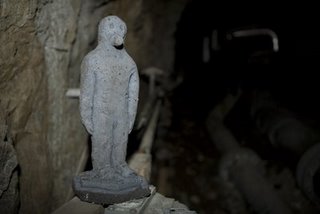
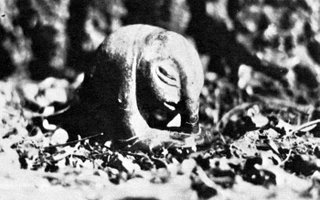
The statuettes themselves remind me of the sculptures made by one of HP Lovecraft's close friends, weird fiction author Clark Ashton Smith. The black and white pictures in this post are Smith's. I culled them from the gallery of the highly recommended 'Eldritch Dark' website.
Books
Recent book acquisitions, all three second hand:
- Dostoewksy, 'Crime And Punishment';
- Ian Buruma & Avishai Margalit, 'Occidentalism'; and
- Clifford Geertz, 'Available Light. Anthropological reflections on philosophical topics'.
Tuesday, October 24, 2006
Dem A Bomb We
 'Dynamite! Dancehall Style' is yet another great Soul Jazz Records compilation.
'Dynamite! Dancehall Style' is yet another great Soul Jazz Records compilation.A few months ago, I discovered the Barefiles website - a treasure trove of Dubstep and Grime mix tracks, brimming with rough but beautiful diamonds mined from Londons pirate radio stations. Just before I went on a short trip to London in august, I downloaded what must be Barefiles' Koh-I-Noor: a mix track by Kode9 from Mary Anne Hobbs' BBC1 radio programme Breezeblock. It was the perfect soundtrack for the London trip - even though it is perfectly possible to love dubstep even if one doesn't live in South London, dubsteps rhythms rhyme with that city's dynamism better than with that of any other city.
My favorite part of that mix track was 'Dem A Bomb We' - delerious dubstep with sharp-tongued lyrics about the bomb attacks on London's public transport, angry yet elegant, bass-heavy but lightfooted, beautiful. The part in which the female singer paraphrased Gloria Gaynor's ' I will survive' was especially intoxicating for me - transgressing a taboo on disco that still lingers from my industrial roots. I had no idea who had made the track, but I loved it.
Thus, I was pleasantly suprised when I found out that 'Dem A Bomb We' was made by none other than Kevin Martin, whose musical career I have followed since 1994 and who has had a very strong influence on the development of my musical taste. Martin has been active in so many genres one couldn't count them on the fingers of two hands: jazz, industrial, dub, dubstep, ambient, hip hop, illbient, Chain Reaction-style techno and so on. He's been a long-time collaborator with Justin Broadrick, another musical hero of mine. Even though 'Dem A Bomb We' is far removed stylistically from Kevin Martins industrial-strength musical assault, I apparently loved his music even if I didn't know and couldn't have guessed that it was made by him.
'Dem A Bomb We' turned out to be the first single taken from the Soul Jazz Records compilation 'Dynamite! Dancehall Style', the umpteenth high-quality compilation of black music put out by that label (I have 7 of them, not counting this cd; some are double cds). It is a somewhat eclectic collection of dubstep, dancehall reggea and ragga tracks from both the UK and Jamaica, tracing the evolution of dance-oriented reggea from King Tubby's 1984 'Fade Out' to the latest South London cuts by the Digital Mystikz. Having received it in the mail today and listening to it for the second time, I can wholeheartedly recommend it, and I certainly hope that Soul Jazz Records will release some more compilations in this vein. Who knows, they could turn out to be the 'Macro Dub Infections' of the naughties!
Monday, October 23, 2006
Knitting wool of blackened sheep
Found through the Hydra Head blog: a registration by Kenneth Thomas, of Xasthur and Nachtmystium playing live at the Knitting Factory (!).
Hubble Space Telescope
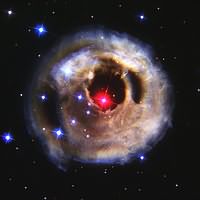 Though one can undoubtedly attempt to justify the Hubble Space Telescope from a utilitarian perspective, I think it is also one of the great luxuries of western civilisation, an immense nonproductive expenditure (Hubble's cumulative costs up to 1999 are estimated to be between 4.5 and 6 billion USD and Europe's financial contribution is estimated at 593 million Euros) that was made just to portray the exuberant beauty of the universe, the prodigious glory of its planets and stars and nebulae, pulsars, quasars, black holes, and galaxies.
Though one can undoubtedly attempt to justify the Hubble Space Telescope from a utilitarian perspective, I think it is also one of the great luxuries of western civilisation, an immense nonproductive expenditure (Hubble's cumulative costs up to 1999 are estimated to be between 4.5 and 6 billion USD and Europe's financial contribution is estimated at 593 million Euros) that was made just to portray the exuberant beauty of the universe, the prodigious glory of its planets and stars and nebulae, pulsars, quasars, black holes, and galaxies.Of course, one could maintain that the object of the Hubble Space Telescope Project is to expand the domination of human knowing (as opposed to the night of non-knowing) to the very limits of time and space, to conquer space intellectually (that is virtually, not in actuality); and that therefore, the Hubble Space Telescope is diametrically opposed to potlach squandering. However; like the Pyramids, the Aztec hecatombs and the Tibetan Lamaist system, a project such as the Hubble Space Telescope can be polyvalent, functioning both as an expansionist project and as a nonproductive expenditure at the same time. While for the small community of scientists actually working with the Hubble Space Telescope the expansionist project may be dominant, the aspect of the Telescope as a beautific squandering may be more powerful in the psychological life of the larger public.
Seen from this perspective the NASA and STScI photos made by the Hubble Space Telescope and displayed on the gallery of the Hubble Heritage Project website are our Aztec Pyramids: the platforms on which we sacrifice our riches. And what platforms! The beauty of the photographs of alien galaxies can certainly rival that of any of the seven wonders of the ancient world.
Sunday, October 22, 2006
Saturday, October 21, 2006
HP Lovecraft covers
Looking for information about the illustrator of many HPL paperback covers, Gervasio Gallardo, I ran across this site, which has dozens of HPL covers. Great stuff!
Friday, October 20, 2006
Eric Zann's Weird Covers
After reading Simon Reynolds article in this months Wire about 'hauntological' music, I found this delightful website, Eric Zann's Weird Covers, "a site devoted to the luridly inventive paperback cover art of the 60's and 70's". The covers have the same kind of appeal as the Nonesuch electronica and Italian prog record covers displayed on Woebot.
Here is part of my collection of '60 and '70 Lovecraftian paperbacks; more tomorrow!
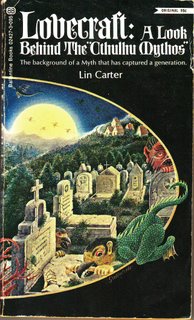


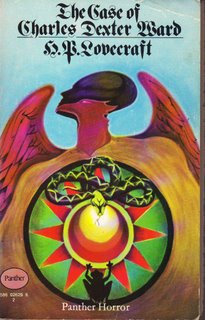
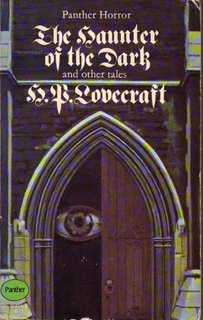
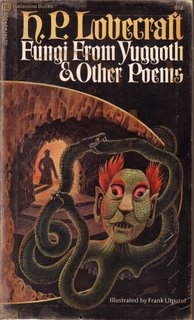
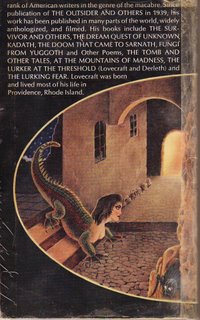
Here is part of my collection of '60 and '70 Lovecraftian paperbacks; more tomorrow!







Christian black metal
In august, I wrote in this blog: "... I feel black metal could acknowledge the tragic dimension inherent in the myth of the crucified Christ - the bible's portrayal of the night of Golgotha is more blackened by far than the many black metal bands' music".
In this months Wire, from an interview with Jazkamers Lasse Marhaug: "... the black metal scene seems to have grown up, meaning that they don't burn churches and have started to behave nicely. So the rebellion factor within the genre is fairly low today. You even have christian black metal bands".
That there are now christian black metal bands makes it necessary to clarify the position taken in the august blog post. It was not a call for christian black metal. Nor was my post on christian imagery in Godflesh's music a call for christian grindcore. Such an idea would be repugnant to me.
The posts are readings of christianity along the lines suggested by Nietzsche, Sir James Frazer, Emile Durckheim and their progeny - thinkers that destabilized christianity. At the same time, the posts attempt to destabilize black metal - a genre that is both badly in need of deformation (in the Marhaug interview it is said that in Norway black metal bands are subsidized. Subsidized!) and yet still has immense potential for transgressive destabilization: at the moment, black metal haunts many music genres...
To deform christianity and satanistic black metal in one stroke - is that megalomania?
In this months Wire, from an interview with Jazkamers Lasse Marhaug: "... the black metal scene seems to have grown up, meaning that they don't burn churches and have started to behave nicely. So the rebellion factor within the genre is fairly low today. You even have christian black metal bands".
That there are now christian black metal bands makes it necessary to clarify the position taken in the august blog post. It was not a call for christian black metal. Nor was my post on christian imagery in Godflesh's music a call for christian grindcore. Such an idea would be repugnant to me.
The posts are readings of christianity along the lines suggested by Nietzsche, Sir James Frazer, Emile Durckheim and their progeny - thinkers that destabilized christianity. At the same time, the posts attempt to destabilize black metal - a genre that is both badly in need of deformation (in the Marhaug interview it is said that in Norway black metal bands are subsidized. Subsidized!) and yet still has immense potential for transgressive destabilization: at the moment, black metal haunts many music genres...
To deform christianity and satanistic black metal in one stroke - is that megalomania?
Thursday, October 19, 2006
Velvet Cacoon - moral outrage
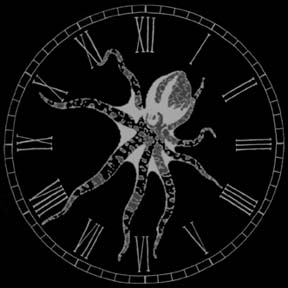 There's one subject I didn't adress yesterday in my long post about Velvet Cacoon: the strong moral outrage amongst black metal fans, when it transpired that Velvet Cacoon were accused of being plagiarists. Many a weblog, forum and myspace page were filled with incensed moralistic diatribes against Velvet Cacoons Josh and Angela.
There's one subject I didn't adress yesterday in my long post about Velvet Cacoon: the strong moral outrage amongst black metal fans, when it transpired that Velvet Cacoon were accused of being plagiarists. Many a weblog, forum and myspace page were filled with incensed moralistic diatribes against Velvet Cacoons Josh and Angela.I found this outrage to be interesting from an anthropological point of view. Why?
The strong moralist reaction is surprising, given the strong transgressive tendencies of black metal. Black metal generally turns the moral hierarchy that is prevalent in our culture on its head. The low, the ugly and the (Satanically) immoral is valorized above the high, the beautiful and the (Christian) good. Black metal is a carnivalesque genre.
With regards to the moral question of plagiarism and artistic originality, those black fans who were angry at Velvet Cacoon for the supposed plagiarism, conformed to the valorization of the original which has been dominant in western culture since the renaissance and still is, even after Marcel Duchamps, Andy Warhol, and Jeff Koons. The black metal carnival clearly doesn't extend to matters of originality in artistic creation.
Or do they suppose originality is on the side of the Devil, and God on that of the copy?
Tuesday, October 17, 2006
Velvet Cacoon tricksters
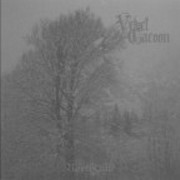 "... only their eyes, filled with confusion, questioning: "Why?" I don't think they were wondering why they were dying, but why they had ever lived. When life itself seems lunatic, who knows where madness lies? To surrender dreams - this may be madness; to seek treasure, where there is only trash. Too much sanity may be madness! But maddest of all: to see life as it is, and not as it should be".
"... only their eyes, filled with confusion, questioning: "Why?" I don't think they were wondering why they were dying, but why they had ever lived. When life itself seems lunatic, who knows where madness lies? To surrender dreams - this may be madness; to seek treasure, where there is only trash. Too much sanity may be madness! But maddest of all: to see life as it is, and not as it should be".This quote from Arthur Hiller's 1972 musical (!) film "Man of La Mancha" is sampled at the tail end of the second track of Velvet Cacoon's cd "Northsuite", which I finally got in the mail this friday. The cd collects tracks from two demos ("Chapel Flames" and "Music For Falling Buildings") from the long prehistory of the band: Velvet Cacoon was started in 1996, eight years before the first official release, "Genevieve".
"Northsuite" is a beautiful cd of droney black experimental shoegazer metal and minimalist ambient music. Compared to "Genevieve", the black metal drones are somewhat more smoothed out, like a landscape which has been covered in a thick layer of snow, rather than the billowing stormcloud drones of the first official release. The sound is a little bit more varied: the aforementioned second track, "Winterglow", features acoustic guitar; my personal favorite "Chapelflames" (a very BM reference to churchburning, that title) is a stately treated guitar drone without song and without the often monotonous drum machine rhythms; there are two ambient wash tracks instead of one; and the third track, "Fire Bloomed From Snow" features a very strange sound in the background, like heavily treated fairground noises ... for me, somewhat reminiscent of Carnival of Souls. Still, the black metal origins of Velvet Cacoon are more clearly apparent than on "Genevieve", both musically and qua imagery: though the music is still far from the orthodoxies of black metal music, "Northsuite"'s metaphors refer to wintry landscapes, that staple - cliché? - of black metal iconography.

Water
The dominant element of Velvet Cacoon's music is the element of water. Water in it's solid state (ice and snow) informed the demos which are collected on "Northsuite"; fog, clouds and rain took centrestage on "Genevieve"; and on the yet to be released "P aa opal Poere Pr. 33" it is the ocean itself: "P aa opal Poere Pr. 33" is a two and half year endeavor of slowly sculpted soft black seadrones. This is the Ocean floor; depth is narcotic, head-pressure forces the eyes closed and deep sea comatose gradually takes over. Tiny humans that curve like violins, ivory in hue, posing for poems in the aquatic nightscape - muses for the moon". For me, the cds title is as strangely beautiful as Innsmouth jewelry. Listening to 'Genevieve' on my iPod while bicycling through the poring rain in a thunderstorm at night was certainly one of the best musical moments this year.
Josh's voice is perhaps the most watery, the wettest in black metal, the gargling snarl of someone whose mouth overflows with vomit or blood or mucus or spittle: "Spittle is finally, through its inconsistency, its indefinite contours, the relative imprecision of its contours, and its humidity, the very symbol of the formless, of the unverifiable, of the non-hierarchized. It is the limp and sticky stumbling block shattering more efficiently than any stone all undertakings that presuppose man to be something - something other than a flabby, bald animal, something other than the spittle of a raving demiurge..." (from Documents' Critical Dictionary, by Michel Leiris, 1929, available from @tlas Press).

Tricksters
Another quote from Man of La Mancha, one which has not been sampled by Velvet Cacoon but which certainly is relevant to their story:
"The Duke: I invent false information about a country and sell it to others stupid enough to believe it.
Miguel de Cervantes: Seems a sound proposition. What brought you here?
The Duke: A lapse of judgment. I told the truth".
From the start, Velvet Cacoon have been like the tricksters of myth legens and folklore, clever and mischievous, using trickery and deceit to generate interest in their music. They've told wild stories about bloodthirsty stage performances, about ecoterrorist activities and ecofascist politics, about non-existent musical instruments (the fabled 'Diesel Harp'), about the death of their drummer SKV, and about the asexuality of the artists (an instance of the gender variability so typical of the tricksters of mythology and folklore) ...
... and all these stories have been lapped up by a very gullible audience (whoever would believe in a diesel-powered guitar being amplified and recorded underwater in various sized aquariums, would probably also believe in the Tooth Fairy).
In the middle of august this year, a new story emerged. Velvet Cacoon were rumored to be plagiarists.
Supposedly, several songs on unreleased demos by Velvet Cacoon were actually created by the Portland artist Kourova, also known as Miranda Lehman, and had been released before on her album "Shipwrecks & Russian Roulette", apparently released on the 16sparrows label. This was her response:
"To the fans of Velvet Cacoon: It has recently come to my attention that the band Velvet Cacoon has not only STOLEN artwork and photos on their website from other artists but also their ENTIRE album, "How the last day came and stayed then faded into simulated rain". This "highly elusive" demo album is actually the property of another musician named Miranda Lehman, aka Korouva. The album's real name is Shipwrecks & Russian Roulette and has been sold through the website 16sparrows since February of 2005, before the release of the Velvet Cacoon Demo. Tracks from Korouva's album were also posted on her Livejournal, in working form, long before any Velvet Cacoon release. When Confronted with these accusations, Velvet Cacoon deleted their official Myspace music page which contained stolen tracks and artwork from Miranda. You can see that they link to their myspace page on their official site and that the myspace page has been deleted. Their main myspace fan page contains stolen illustrations and music as well: "lilac wine, black leaves and me" (real name, "Tide") and also the illustration of a girl with a ship that goes along with the song. I am sorry to all the devoted fans who have been deceived by Velvet Cacoon, their blatant theft of another artist's work is absolutely unforgivable."
A little bit later, another accusation was made, this time by a band called My Violent Ego:
"velvet cacoon, clicks & hisses, and how to feel cool
Current mood: tired
probably nobody cares a fu*k, maybe me in primis, anyway maybe i should write a couple of notes about the fraudolent action of a joke-band named 'velvet cacoon' involving me directly with my violent ego.
In brief, in last two days i read through some metal communities forums and wikipedia that this portland band downloaded from the net mve's free album 'clicks and hisses' some months ago and included it in their doubtfull discography, often available through p2p and other not specified ways. They changed the original album title in 'dizzy from eternity', and i also read some positive reviews over the net..
now, first of all, i can't understand how our mve dreampop melodies may sound 'black metal' (or related) to anyone..
..two, i think it is somewhat childish if you are convinced that "we stole this and that, because we want everybody to hate us so we can feel cool' if that was the real intention.. - how sad and boring..
...three, maybe you're just a kid who made a "big" internet-style joke, so thank for the publicity, - i just hope that someday you'll find your velvetcacoon-someone that decides to steal yr music.
that's it.. this my first myspace-blog post, hopefully the next one will be happier..
thanks for Yr attention".
The reply of Velvet Cacoon was:
"And on the subject of Velvet Cacoon, the band is a total fraud. Nothing about it holds any importance. The "How the Last Day" demo isn't even us. It's Miranda Lehman from Portland. (check the Wiki site). "Dizzy" isn't us. It's "My Violent Ego". Nothing is us. "Northsuite" was recorded in 3 hours and sold to a fake label who paid us enough for rent and substances. That's why its so terrible. We're utter bastards. We have no respect for anything. Now we're beginning the campaign to show just what we've done. We are walking examples of what far too many drugs will do. They make you crave havoc. They make you want to turn the world upside down while laughing like a maniac.
And now the soft afterglow sets in. VC is winding down. One last album. One final collection. And the damn thing isn't even recorded yet. Maybe we'll just steal it too. I must tell you that our correspondence will not continue much longer. I'm going to make a clean break - you'll know when the moment hits. You'll know exactly what I mean too.
First, I must convince the world that I am nothing special or intelligent, nor was Velvet Cacoon. If there was discussion about us before, I can only imagine what is about to come.
Feel free to spread this letter."
From august 19th 2006, the official Velvet Cacoon website displayed the following message:
"I'd venture to say that in terms of what a band can do to create chaos, the antics we've pulled rank high up there. Everyone is uneasy now; the sources we thieved, the label we work with, our fans - the entire situation has everyone on edge.
So lets cut the mustard, through the custard to the ripe truth. Many question why it is we do what we do. Why make music that people enjoy only to tarnish our reputation by lying about things? There has to be a reason. Right?
Well.........
No. There is no reason. No rhyme, no reason. There is no point to any of it. If you're looking for a plot line, a climax, a theme, a reason, you won't find it. We are random and without cause. Up is down, left is right. Drugs are good and drugs are bad, and the only thing we stand for is this: everything is pointless. You don't matter, this doesn't matter. Stop thinking. For once, just stop. Just enjoy the moment. It's better this way.
We're random people who think the world and life/humans are amazing. We're laughing in our amazement of everything, and in very brief moments (and I'm talking MICROSCOPIC whisps of time) when we stop laughing for a moment and sober up, we create music that is symbolic of life in its entirety. Absurd, pointless, and mesmerizing.
That's what "Genevieve" is. It's what "PaoPP.33" is. Perhaps the only two records in the world made where everything from the outside world is voided out.
Are we crazy? Bi-polar? MPD? Does it even matter? The entire world is crazy. "Normal" is an illusion. The only thought that is really constant in my mind is that I love absolutely everything about life. Relax, we know everything now. It's over.
I'm going to sleep. Interesting correspondence goes here -> josh@velvetcacoon.com".
Notice the difference in literary quality between Velvet Cacoons texts on the one hand and those of 'My Violent Ego' and 'Kourova' on the other?
From august 30th onwards, the aforementioned text too was removed from the Velvet Cacoon website: their was only a front page left, bearing the legend: "Amelioration".
A few weeks later, the frontpage was removed also. Now, the official Velvet Cacoon home page is only a sponsored link page. Perhaps the trick had backfired on the trickster. Is this the end of Velvet Cacoon?
I for one am still somewhat sceptical about the accusations of plagiarism. Is it the 'Cry Wolf' effect (another trickster legend, that)?
Kourova might well be a member, friend or associate of Velvet Cacoon: the title of her cd, "Shipwrecks & Russian Roulette", sounds much like the title of a Velvet Cacoon song or cd - shipwrecks pointing towards Velvet Cacoon's watery themes, Russian Roulette to their dark, black metal side. Also, Kourova is said to be an artist from Portland, Oregon, USA - the very home town of Velvet Cacoon. Could that really be a coincidence? Wouldn't it be a little farfetched to suppose that of all the bands in the world, Velvet Cacoon would plagiarize a band from their own home town? The 16sparrows website sells greeting cards for quirky, sarcastic folks and contains 'Fashion Tips for a Zombie Infested World'. Doesn't that sound just a little bit like the type of quirky, sarcastic, artistic folks who might aid Velvet Cacoon play pranks on hapless black metal fans?
On the other hand, I haven't been able to find the least clue connecting 'My Violent Ego' to 'Velvet Cacoon' . So maybe my paranoid scepticism has been misplaced and Velvet Cacoon have indeed plagiarized those bands.
Perhaps the most sober response was from Velvet Cacoons record label boss, Full Moon Productions Jon "Thorns" Jamshid: "Nothing was released by VC w/her material on it - maybe a couple of pix and an MP3 on their MYSPACE site - thats about it. Talk about being gullible - now there is more and more debate and "conversation" on the subject. Everyone seems to fall into Josh's web willingly".
In any case, Velvet Cacoon seem to have underestimated the potential backfire of their actions and have perhaps been as stupid as a trickster can be: "...isolated, amoral and unselfconscious, clumsy, ineffectual, an animal-like buffoon..." (Mary Douglas in Purity and Danger).
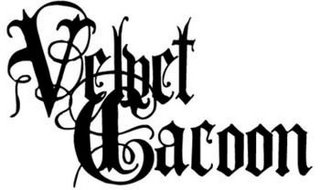
The End?
Miguel de Cervantes: I'm a poet.
The Duke: They're putting people in prison for that?
Miguel de Cervantes: No, no, no, not for that.
The Duke: Too bad.
Recently, there have been new signs of life from the Oregon pranksters. Southern Lord have announced the release of vinyl editions of 'Northsuite' and 'Genevieve'. Velvet Cacoons Myspace pages have reopened and their page on the Full Moon Productions website has been renewed, promising the release of "P aa opal Poere Pr. 33" this year.
Velvet Cacoons message to the world?
"All of our maps are lost in the wind, luxurious wordplay back in hand, laced to the nines in immaculate decadence, the late Oregon fold, life on a grey seacoast, snowsailing into the deep December lavender of a heartbeat's cadence, drinking grenache, over and over, grenache grenache grenache, spiced lacquer coating in the fade of dusk, passages from "A Rebours", manic laughter at old art and new vignettes, music of the sea, stars, drugs, dreams, soft nothingness treasured, and after much delay we have finally started recording the new album.
What is there to say? The rain out here is endless, grey waves all day, black waves all night, sheets of freezing rain are almost piercing, very influential on this whole process. This feels incredible".
Labels:
Black Metal,
Mary Douglas,
Michel Leiris,
Velvet Cacoon
Sunday, October 15, 2006
Dwelling in a dead raven for the glory of crucified wolves
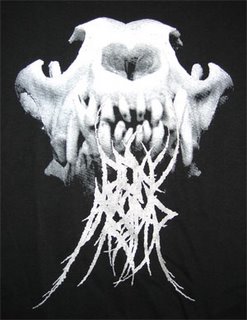 Wolfmangler: a drone like a fallen tree, rotting in a primeval forest in a wet autumn, so thick and mushy one can almost see mushrooms growing on it...
Wolfmangler: a drone like a fallen tree, rotting in a primeval forest in a wet autumn, so thick and mushy one can almost see mushrooms growing on it...Wolfmangler: a drone so heavy and slow it makes one drowsy, like polish plum brandy burning it's way through one veins and brain; a drone so slow it's decomposing, like a procession of mad lepers...
Wolfmangler: a blackened improvised doom metal drone of double bass, two electric basses, flute, bassoon, trombone and the unintelligible mumbling of texts by Frank Sinatra, HP Lovecraft and Tyrtaeus; the sinister drone of a Pole called Smolken, of 'Dead Raven Choir' and 'Garlic Yarg' notoriety; a drone which sounds as if a Current 93 goose has been force fed a diet of slower, much slower Bathory, Burzum and Darkthrone to fatten it's liver until it is black and poisonous and unfit for consumption...
Dwelling in a dead raven...: Mayhem's Dead kept a rotting raven in a plastic bag to "inhale the scent of death" before going on stage, and this music is like that smell, as if it was music made for smelling rather than for hearing, for groping one's way through a dead raven as large as a concert hall, a morbid maze for the glory of crucified wolves, fascinans ad tremendum...
...for the glory of crucified wolves: to attain the grade of Magus, Aleister Crowley captured a toad, baptized it as Jesus of Nazareth, arrested it and charged it with blasphemy and sedition and then crucified it. It was Crowley's ritual for a Dying God; at the same time it caused the elemental spirit of the slain reptile to serve him. Where the toad was Crowley's blasphemous metaphor for Christ, the wolf is Smolken's; and the elemental spirits of slain wolves serve him. Magnificent.
Saturday, October 14, 2006
Blackened States playlist

Yesterday and today I worked on this little playlist, a collection of avantish black metal and industrial ambient. Though I’m not at all a dj, I like to make such compilations every now and then: juxtaposing the tracks makes me listen to the music in new ways.
'Blackened States’ playlist
1. “Embleton Rookery, Northumberland, England” by Chris Watson, from the “Stepping Into The Dark” cd (a nice enough cd, though his “Weather Report” cd is much better; however, this utterly brilliant recording of black birds crowing near an old countryside church provided the inspiration for this playlist);
2. “Piercing Where They Might” by Lurker Of Chalice, from the brilliant self-titled cd;
3. “Loss And Inner Distortion” by Xasthur, from his most recent cd “Subliminal Genocide”;
4. “Narrow Road” by Thralldom from their “A Shaman Steering The Vessel Of Vastness” (one of my favorite cd’s of 2006);
5. “Winterglow” by Velvet Cacoon, from their “Northsuite” cd (I finally got it in the mail Friday!);
6. “Race Of Apathy” by Striborg from the “Embittered Darkness/Isle Des Mortes” cd;
7. “The Ice Desert” from Benighted Leams’ very odd ”Ferly Centesms” cd;
8. “All The Pretty Little Horses” by Current 93, from the compilation cd “Calling For Vanished Faces” (a heartrending lullabyif ever there was one; it originally appeared on my favorite C93 cd);
9. “It's Oh So Strange” by Foehn from the “Insideout Eyes” cd (which has a very nice handmade collage as a cover; why don't we hear from her anymore?);
10. “Not Real” by Final from the “3” cd (a Fennesz Godflesh, highly recommended!);
11. “Reasonably Miserable” by Ginnungagap, from the “1000% Downer EP”;
12. “Rise Up, Warriors” by Wolfmangler from “Dwelling In A Dead Raven For The Glory Of Crucified Wolves”.
Friday, October 13, 2006
Bat wings
Pleasure
 In 'The Pleasure of Text', Roland Barthes wrote: "The more decent, well-spoken, innocent and saccharine a story is told, the easier it is to invert it, the easier it is to blacken it, the easier it is to read it against the grain".
In 'The Pleasure of Text', Roland Barthes wrote: "The more decent, well-spoken, innocent and saccharine a story is told, the easier it is to invert it, the easier it is to blacken it, the easier it is to read it against the grain".But that operation also works the other way around: "The more indecent, evil and bitter a story is told, the easier it is to invert it, the easier it is to whitewash it, the easier it is to read it against the grain".
Some posts on this blog seem to work this inverted Barthesian operation: reading Xasthur's very depressing black metal as Can's buoyantly optimistic 'Future Days', reading Christian themes into Godflesh's industrial bluster, imaging dubstep's warm bass under black metal's treble-icy guitars...
Is this inverted operation just as pleasurable as the blackening operation described by Barthes? Does the possibility of such an inverted operation on (black or industrial) metal means that these formations have lost (some of) their transgressive dynamism and have become stable and stabilizing? Or is it a sign of metal's continuing renewal, of the metal's youthful ability to evolve? Does it foretell the evolution of strange new metal sects?
Hospital Productions Underworld
In the 'Show no mercy' column on Pitchfork, there's a description of Dominick Fernow's black metal music store in New York, 'Hospital Productions'. The description is wonderfully pertinent to one of my blog's concerns: black and blackened musics, black metal meets dub(-step), metallic satanism meets ras tafari christianity:
"The shop's located on 60 East 3rd Street, but even with the address in hand it's fairly difficult to spot: Hidden away in the basement of a reggae store, Jammyland Music, it's literally through a hole in the ground. Go to the back of Jammyland, walk carefully down a black ladder, find yourself in well-kept black and red fallout shelter decked with smashed microphones, a nailed guitar, plenty of framed flyers, sundry ephemera, and a packed Bloodyminded section".
Hospital Productions: an underworld which can only be reached by climbing down a rickety ladder through a hole in the ground, like a shaman climbing a ladder to the beyond...
The idea of a black metal store in the basement, i.e the subconscious, of a reggea store is so Freudian it is hard to believe that such a place actually exists. But, on the other hand, wouldn't it be more interesting to turn this Freudian hierarchy topsy-turvy and have some black metal with a dubreggae subconsious?
"The shop's located on 60 East 3rd Street, but even with the address in hand it's fairly difficult to spot: Hidden away in the basement of a reggae store, Jammyland Music, it's literally through a hole in the ground. Go to the back of Jammyland, walk carefully down a black ladder, find yourself in well-kept black and red fallout shelter decked with smashed microphones, a nailed guitar, plenty of framed flyers, sundry ephemera, and a packed Bloodyminded section".
Hospital Productions: an underworld which can only be reached by climbing down a rickety ladder through a hole in the ground, like a shaman climbing a ladder to the beyond...
The idea of a black metal store in the basement, i.e the subconscious, of a reggea store is so Freudian it is hard to believe that such a place actually exists. But, on the other hand, wouldn't it be more interesting to turn this Freudian hierarchy topsy-turvy and have some black metal with a dubreggae subconsious?
Tuesday, October 10, 2006
Subliminal review genocide

Interesting reviews of Xasthur's 'Subliminal Genocide' on Dusted, Pitchfork, Brainwashed, Outer Space Gamelan, and Maelstrom.
Monday, October 09, 2006
Groundhog Night
Groundhog Day, Harold Ramis' 1993 film, is one of the most popular contemporary morality plays. An arrogant, sarcastic and slightly misanthropic weather man, played by Bill Murray, is sent to a tiny American town to report on a piece of local folklore: the appearance of a groundhog that would predict the onset of spring. Waking up the next day, he discovers he's actually awoken again on the very same day as yesterday. The movies tagline is: "He's having the worst day of his life... over, and over...". At first, Murray's character sets out to cynically exploit his fore-knowledge of the events that will happen in this eternal today. Later, boredom sets in, depression follows in it's footsteps and the weather man tries to kill himself repeatedly, but to no avail ... he keeps waking up again the next morning on the same day. Then, the weather man rises above himself, and starts using his fore-knowledge for altruistic purposes. When he has become thorougly good in a moral sense, he gets the girl of his dreams and wakes up on a new day - a truly new day.
Even though it has a very saccharine ending, Groundhog Day is a wellmade comedy which has appealing aspects of fantastic realism and raises some interesting philosophical questions.
But...
In 'The Pleasure of Text', Roland Barthes wrote: "The more decent, well-spoken, innocent and saccharine a story is told, the easier it is to invert it, the easier it is to blacken it, the easier it is to read it against the grain".
This certainly goes for Groundhog Day. See, for example, this YouTube 'remix' of Groundhog Day, in which the film is re-imagined as a Halloween-style psycho slasher.
For me, it is certainly pleasurable to imagine the same story retold, Groundhog Day remade, by David Lynch - with the very same story, the very same ending, which has however become very unnerving through some barely perceptible changes - a little bit like the very unheimische end of Blue Velvet. A remake by Abel Ferrara would also be an interesting experiment - what weird religious subtext he would give Groundhog Day, is anybody's guess.
Even though it has a very saccharine ending, Groundhog Day is a wellmade comedy which has appealing aspects of fantastic realism and raises some interesting philosophical questions.
But...
In 'The Pleasure of Text', Roland Barthes wrote: "The more decent, well-spoken, innocent and saccharine a story is told, the easier it is to invert it, the easier it is to blacken it, the easier it is to read it against the grain".
This certainly goes for Groundhog Day. See, for example, this YouTube 'remix' of Groundhog Day, in which the film is re-imagined as a Halloween-style psycho slasher.
For me, it is certainly pleasurable to imagine the same story retold, Groundhog Day remade, by David Lynch - with the very same story, the very same ending, which has however become very unnerving through some barely perceptible changes - a little bit like the very unheimische end of Blue Velvet. A remake by Abel Ferrara would also be an interesting experiment - what weird religious subtext he would give Groundhog Day, is anybody's guess.
Sunday, October 08, 2006
God-Flesh
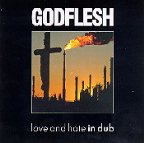
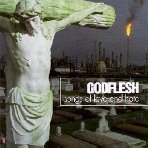

God-flesh: God-man: Son of God: Jesus: Jesu.
Justin Broadrick's bands Godflesh and Jesu not only refer to Jesus Christ in their band names; their iconography also refer to Him. Surprisingly, I've never read an interview in which the role of Christian imagery is examined. So, what is there to do but to speculate?
On Godflesh's 'Streetcleaner' the cover art, a still from Ken Russell's 1980 film Altered States, shows a hazy picture of Golgotha, the Place of Skulls, against a fiery, hellish background. The magnificent second track, "Christbait Rising" of course also refers to Christ, even though the lyrics are unintelligible: "Don't hold me back, This is my own hell / Christbait, Slugbait, Rise and bring you down / Christbait Rising, In your own mind / Christbait Rising, Bleed dry mankind".
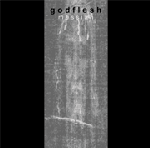
The title of Godflesh's 1995 ep 'Messiah' speaks for itself. The title song's lyrics explicitly refer to the Cross: "You see / their truth / You know / their lies / give me fire / give me air / give me fire / give me air / give me fire / You see / your cross / We'll blame / our loss". The orginal ep featured the shroud of Turin on it's cover.
The song titles of 'Love And Hate' also point towards Christian issues: "Sterile Prophet", "Gift From Heaven", "Angel Domain", "Kingdom Come" and "Almost Heaven".
The inlay of 'Selfless' shows a humanoid robot hanging from the cross; the title of 'Hymns' obviously refer to Christian songs of praise. The title of the last and most powerful number of that cd was to become the name of Broadrick's next band after Godflesh split: Jesu. It's lyrics: "Nature will step on you, / nature will eat you up, / Jesu...Jesu / Nature don't care for you, / nature don't see you. / Jesu...Jesu / You're Fucked / You've Lost".
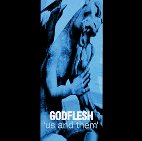
Several cd's show Church-related artwork:
- the inlay of 'Pure' had two photographs of (neo?-)gothic stonework from a church or cathedral;
- the interior of the cd booklet of 'Selfless' has a still from the eerie 1962 film 'Carnival of Souls', showing a stained-glass church window bearing the words 'Cast Out Devils';
- the cover art of 'Us And Them' shows a gargoyle (gargouille) from some unknown church or cathedral;
- both 'Love And Hate' and 'Love And Hate In Dub' show a crucifix against a backdrop of petrochemic industry.

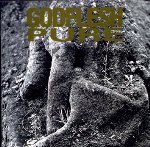
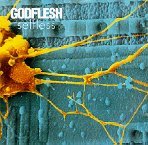
Godflesh is also the synthesis of the thesis 'Flesh' and the antithesis 'God'. All that opposes Flesh can take the place of God:
- Thus, the cover art of 'Slavestate' shows a picture of the face of a young boy (Flesh, the real) - but it is obviously a screen shot from television (unFlesh):
- 'Pure's cover art is a close-up black and white photo of the hand (Flesh) of a stone (unFlesh) statue from Greece;
- The cover art of 'Selfless' shows a human nerve cell (Flesh) growing on a microchip (unFlesh).
I've never read an interview in which Broadrick is questioned about the meaning of all Christ-related imagery in his work - not even in The Wire!. The subject seems to be studiously avoided by most journalists - probably it is a bit too personal, a bit too embarassing, a bit too uncool for most music journalists of the industrial and metal variety. Personally, I've always felt that Broadricks handling of this subject was much more adult than most metal bands - no childish satanic clichés here and certainly no 'white metal' (a disgusting genre) here either. Broadrick's focus appears to be on the tragic aspects of the Christ myth, on the suffering Christ, tortured, humiliated and crucified - a tale that is just as brutal as Godflesh's music.
Wednesday, October 04, 2006
Sunday, October 01, 2006
Triple sons
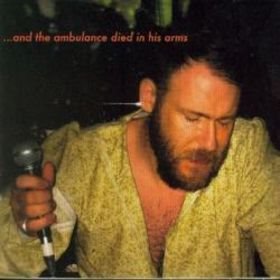 "... and the ambulance died in his arms" by Coil is a heartwrenching chronicle of a death foretold, recorded on april 4th 2003 at an edition of the All Tomorrow's Parties festival curated by Autechre. It rates amongst the best live work of Coil, connecting the 'Songs To Play In The Dark' to the 'Black Antlers' sounds.
"... and the ambulance died in his arms" by Coil is a heartwrenching chronicle of a death foretold, recorded on april 4th 2003 at an edition of the All Tomorrow's Parties festival curated by Autechre. It rates amongst the best live work of Coil, connecting the 'Songs To Play In The Dark' to the 'Black Antlers' sounds. The final song, the title song of the cd, is the most unheimisch of the whole set. In this heartfelt, sombre version of Musick To Play In The Dark's last song "The Dreamer Is Still Asleep", which was also the first song to be part of Jhonn Balances burial rites, Balance seems foresee the circumstances of his own death - enough to make one fleetingly believe superstitious, irrational things. The Treshold House website states correctly that "...much of the work of Coil, Jhonn's Life's Work in fact, described or addressed that Very Moment" (meaning the moment of his death).
'Triple Sons and the One You Bury' is the song from this cd that speaks most strongly to me personally. It's lyrics are replete with images of mortality. For me, the song is about the death of Christ at Golgotha, as Jesus, Son of God, was hung on the cross between two sons of man, two robbers. Tellingly, yew berries feature in the lyrics and in a short monologue at the end of the song. Through assonance, Jhonn Balance associates these berries with burial: "I swallow the one yew berry" becomes "I swallow the one you bury". The poisonous yew is known as the Tree of the Cross. The yew-trees of Nevern in Dyfed, Wales, are said to bleed a red substance every year in sympathy with the Christ.
'And the One You Bury' thus is Christ himself, whose burial is literature's most famous, and whose death was foretold (both by himself and by Isaiah, amongst others) like that of Jhonn Balance.
In the lyrics, 'the One You Bury' equals 'a cup of mercury', as both are swallowed. The element of mercury sometimes is associated with Christ in alchemical occultism. The line "I swallow the one you bury" thus can be construed to refer to the eucharist: drinking inebriating wine transsubstanciated into the blood of Christ in that truly poetic rite of Christianity, a rite that resonates with ancient, pre-christian meanings.
Undoubtedly one could write an interesting Phd-thesis on occult imagery in Balance's lyrics.
Isn't he our modern-day Frazerian Baldur or Adonis?
Meditate on bass weight
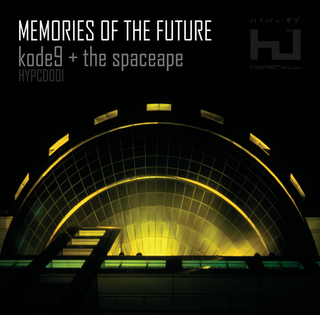
Listening to Sunn 0)))'s 'Black One', reading this interview with Kode9: "The sub bass is immense, simultaneously tactile and audible, while the fleeting melodies are often kind of sublime".
If Kode9 + The Spaceape present 'Memories of the Future', do Sunn 0))) present - with their modernistic stylizations of things primitive and medieval - premonitions of the past? Even if these retro-futurist/future-retroist memories/premonitions have different directions on the retro-futurist axis, would it be possible that they are somehow part of the same (mythological) system? Are they not both myths "... which in a sense provide an operating formula by which we can deal with our passage through consciousness - our movements through time and space" (JG Ballard in an 1983 interview by Graeme Revell in Re/Search no. 8/9).
Subscribe to:
Comments (Atom)









